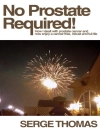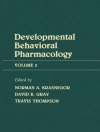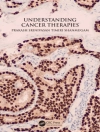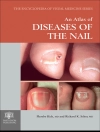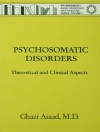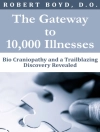This book provides a state-of-the-art overview of our current understanding of deep brain stimulation (DBS) for the treatment of neurological and psychiatric disorders. With a broad multidisciplinary scope, it presents contributions from leading experts in the field from Europe and America, who share not only their knowledge, but their experience as well. The book focuses both on basic and theoretical aspects of DBS, as well as clinical and practical aspects. It follows an evidence-based approach, and where possible offers clinical recommendations based on published guidelines.
It starts with a general section, which discusses basic principles and general considerations. This is followed a sections dedicated to neurological disorders, and psychiatric disorders, in which only accepted indications are discussed. All experimental indications are discussed in the final chapter. The text is supplemented with numerous illustrations.
Intended for medical specialists and residents involved in the treatment of patients with DBS, it also appeals to other professionals working with DBS patients, such as psychologists, nurses, physiotherapists, as well as basic and clinical neuroscientists.
Innehållsförteckning
Part I General Section.- 1. The History of Deep Brain Stimulation.- 2. Anatomy of Targets for Deep Brain Stimulation.- 3. Mechanisms of Deep Brain Stimulation.- 4. Surgical and Technical Aspects of Deep Brain Stimulation.- 5. Future Perspectives: Adaptive Deep Brain Stimulation.- 6. Neurophysiology of the Basal Ganglia and Deep Brain Stimulation.- 7. Anaesthesia for Deep Brain Stimulation Surgery.- 8. Programming: General Aspects.- 9. Neuropsychological Assessment.- 10. Ethical Considerations.- 11. Organisation of Care for Patients Treated by Deep Brain Stimulation.- Part II Neurology.- 12. Deep Brain Stimulation for Parkinson’s Disease.- 13. Tremor.- 14. Dystonia.- 15. Epilepsy.- 16. Gilles de la Tourette syndrome.- Part III Psychiatry.- 17. Deep Brain Stimulation in Obsessive-Compulsive Disorder.- 18. Deep Brain Stimulation for Depression.- 19. Other Indications for Deep Brain Stimulation.
Om författaren
Yasin Temel is a Professor of Neurosurgery of Maastricht University Medical Center, Maastricht, The Netherlands. He is an expert in Deep Brain Stimulation and has published extensively on this topic. He edited the Dutch ‘Handboek diepe hersenstimulatie bij neurologische en psychiatrische aandoeningen’ together with A. F.G. Leentjens and R.M.A. de Bie.
Albert F.G. Leentjens is Professor of Neuropsychiatry at Maastricht University Medical Center, where he is in charge of the psychiatric DBS programme. Together with Y. Temel and R.M.A. de Bie he edited the Dutch DBS handbook: ‘Handboek diepe hersenstimulatie bij neurologische en psychiatrische aandoeningen’.
Prof. dr. Rob M.A. de Bie is the leader of the Movement Disorders group and the Neurodegeneration programme at Amsterdam Neuroscience, University of Amsterdam. His research focuses on improvement of treatment of Parkinson’s disease, including Deep Brain Stimulation, pharmacological treatment, and non-motor symptoms. Prof. de Bie focuses on complex clinical research and he has initiated several large clinical trials.
Pr Stephan Chabardes is professor of neurosurgery at Grenoble Alpes University. He is the head of the functional and stereotactic unit at Grenoble-Alpes university hospital and of the Clinical unit at CLINATEC-CEA LETI. He is member of the executive committee of the ESSFN, member of the board of directors of the WSSFN and President of the Functional and Stereotactic section of the French Neurosurgery society. Pr Chabardes has participated to the publication of more than 160 peer reviewed papers and is currently heading different clinical trials on deep brain stimulation.
Prof Alfonso Fasano is the co-director of the Surgical Program for Movement Disorders at Toronto Western Hospital, staff neurologist at Toronto Western Hospital and at the Sick Children Hospital, Toronto, ON, Canada. He is also a full professor of medicine in the Division of Neurology at the University of Toronto and a clinician investigator at the Krembil Research Institute, also in Toronto, Ontario, Canada. He is member of the Cente R for Advancing Neurotechnological Innovation to Application (CRANIA). His main areas of interest are the treatment of movement disorders with advanced technology (infusion pumps and neuromodulation), pathophysiology, and treatment of tremor and gait disorders.



